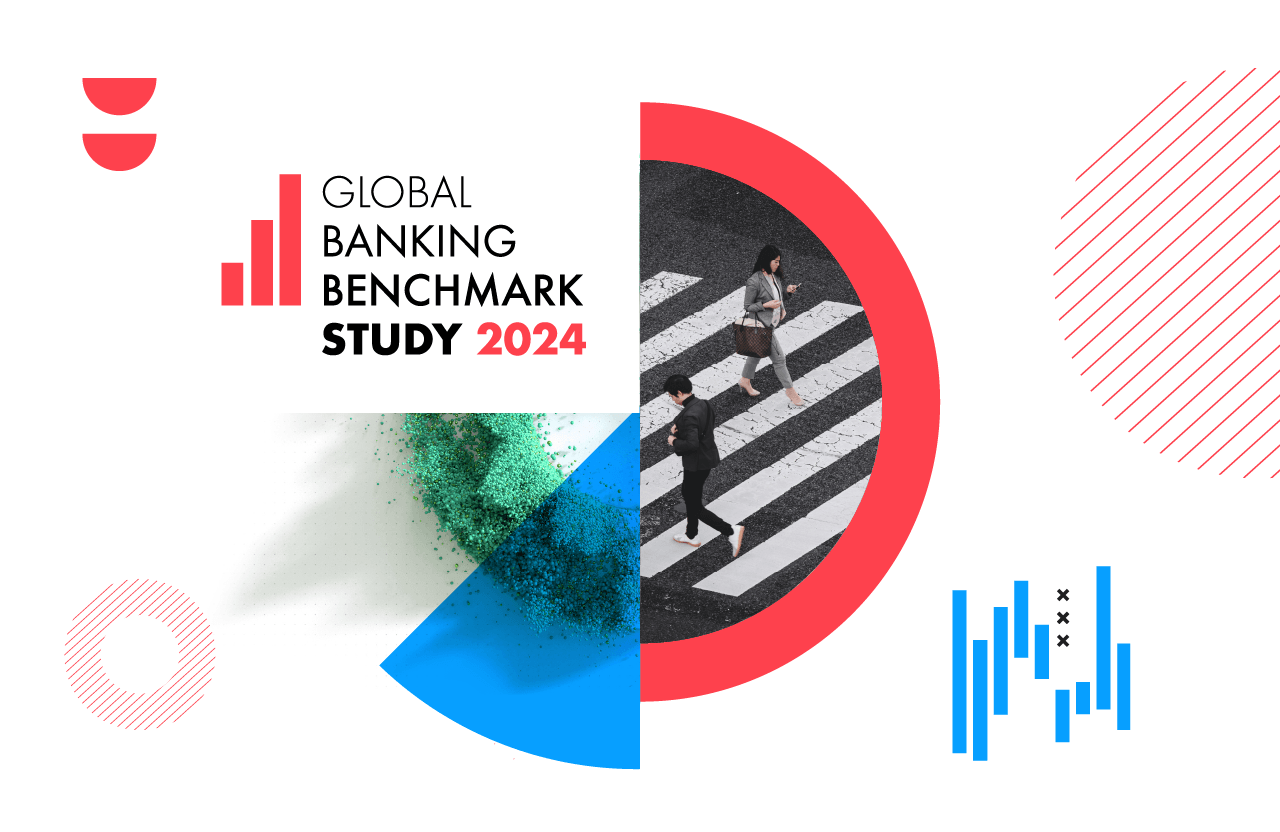What issue can we solve for you?
Type in your prompt above or try one of these suggestions
Suggested Prompt



Insights
How banks’ customer experience can support low-income households struggling with the cost-of-living crisis
How banks’ customer experience can support low-income households struggling with the cost-of-living crisis
The ‘Cost of Living Crisis’ is pushing consumers’ day-to-day living expenses to a new high. For banks, this presents an unprecedented opportunity to support those in lower-income households. Financial services can use the higher interest rate environment to invest back in those often overlooked consumers who make up the highest chunk of their customer base.
Leveraging CX (Customer Experience) analytics and insights can reveal areas of innovation previously unexplored and deliver benefits for both banks and customers. In this article, we will explore four ways CX innovation can help banks support their customers.
The 80:20 rule
The Pareto Principle in business refers to how 80% of a business's profit typically comes from a mere 20% of its clients – this is especially true in banking.

For example, many retail banks’ profits usually come from customers with large deposits, as this capital gives banks the cash required to provide loans. Customers paying high-interest rates on loans and mortgages also contribute the most toward profits.
But shouldn't banks be for everyone? Lower-income households are in the 80% because they have less financial security and less ability to fully participate in the economy, deposit large amounts or take out hefty loans.
For example, a lower-income household would have an income of around £30k per year and be living outside of London. It would have little or no disposable income, with most of its spending on homeowner/housing costs (ONS).
Banks should act as trustworthy partners to these households and focus on customer-centricity. Using CX data to inform product and feature capabilities, banks can educate and empower those most in need.
How are banks supporting lower-income households during the cost-of-living crisis today?
Lower-income households are currently underrepresented in the market, and banks can do more to offer tailored financial products and services for this audience. The current solutions are often services such as dedicated phone lines or teams. While this can be a valuable service, using AI technology could enhance the CX by prompting next best actions and lead to far more practical implications.
Furthermore, banks should implement solutions that ensure their customers’ financial health is adequately taken care of not just now but makes them financially resilient in the long term too. Setting up goals combined with timely nudges or implementing an auto-debt repayment logic are only two of many ways banks can leverage CX tools to design, test and develop products and features relevant to most households.
By lending a hand to struggling customers in these difficult times, banks will make their customers’ lives easier and so make them more engaged and loyal in the long term, so it’s a win-win.
Start by helping your customers make smart financial decisions today
Lower-income households often need help with budgeting. But when banks offer budgeting solutions, they need to think about today and tomorrow.
Many challenger banks (e.g., Monzo, Starling, Chase, Revolut) have created tools for their customers to create ‘pots’ of money for different purposes. Users can then lock pots to stop them from dipping into their savings, and they can also set savings goals to work towards.
Challenger banks may be growing in popularity; however, most customers don't use them as their primary bank. This presents an opportunity for traditional banks as they have larger volumes of historical data about their customers.
To push further, they could use customer data to predict unhealthy spending habits and give advice to prevent them. Traditional budgeting tools require considerable effort to engage with; however, if most of the work is done for the users (such as combining auto-categorization of spending with nudging about areas of concern), they will be more likely to engage with and gain value from it.
Respond to borrowing needs creatively
The yearly household energy bill is forecast to reach £4,000 between next April and June (2023), which is 60% higher than the government’s current cap. As a result, lower-income households are more likely to need additional income in the coming months, and banks should look to provide tailored lending products that suit their individual needs.
For example, fintech Zilch provides customers with a Buy Now, Pay Later (BNPL) credit that can be spent on essentials such as energy bills and groceries, with 25% of the payment required upfront. Customers can then spread the remaining costs over six months.
BNPL schemes are great in theory, but in practice, they can often hurt rather than help lower-income households. The customer is subject to fees and interest charges if payments aren’t made on time, and they may get carried away and buy more than they can afford (academically known as mental accounting).
If executed correctly, BNPL has the potential to help rather than hurt. Fair and responsible eligibility criteria need to be established, and banks should include controls around the use of such borrowing as part of their CX. Controls could be set up around any of the BNPL dimensions, e.g., category of purchases (bills vs. clothing), the amount borrowed (spread the cost of 50% of the total vs all of it) or even eligibility (available to customers only once every three months for a maximum of two categories) but they have to match the customer base’s needs and maturity in order to truly be effective.
Leverage data and empower lower-income households with the knowledge to develop long-term financial resilience
Research shows that those with lower income struggle more with financial literacy than those with a higher income. With this in mind, banks can leverage their data to offer services that will give customers the tools to gain financial knowledge and improve their long-term financial resilience and spending habits.
Leveraging Open Banking (OB) capabilities is one way to start helping customers do exactly that. OB can be used to help customers visualize their financial situation better and improve their decision-making.
For example, Plum uses Open Banking capabilities to link all of a user's bank accounts and credit cards in one app. It then calculates how much users can afford to set aside and automatically saves it for them.
Plum also automatically checks to see if users can save money on their bills such as gas, electricity, and internet. With sophisticated integrations and well-defined decision logic, banks can incorporate similar tools in their services. They can use their vast data and AI to prompt users when they are overpaying for services, suggest switching alternatives, prevent unhealthy spending and simply help users save, invest or pay off debt.
Finally, don't forget the human touch
There are numerous smart technologies available for banks to use, but banks shouldn’t focus solely on feasibility within their strategies. The end result has to resemble an empathetic service design that customers can interact with.
Banks can combine technology and the human touch so that each enhances the other. For example, qiip is a LATAM-based Personal Finance Management (PFM) platform that uses a sophisticated AI tool partnered with professional expertise to help its users better understand and control their finances.
Financial coaching sessions are often time-consuming and costly to execute properly; however designing the user interface in a way that data is then visualized in easily digestible bits and synthesized in an understandable language could really make a difference.
Banks can look to merge data insights with service delivery that helps, protects, and educates customers. But the offerings need to speak to this audience base in a way that will engage them. Focus on creating positive, relevant brand messaging and deliver a tone of voice that feels inclusive, motivational, reassuring, and educational.

CXGX: The Customer Experience Growth Index
Stop wasting money on CX. Through our unique methodology, we can identify which CX investments are most likely to fuel business growth for your bank.
Understanding and improving the CX could be a vital enabler for lower-income households during the cost of living crisis. Banks can harness their available technologies to provide better CX for this customer segment. However, as they develop these offerings, they need to keep them customer-centric and be focused on empathy and personalization.
Interested in how you can harness CX and technology to improve your services for lower-income households? Why not get in touch with us today to learn more?
Publicis Sapient have helped implement data-driven CX solutions for numerous financial services clients, helping them to improve their offerings for specific segments. Our expertise and knowledge in this space have allowed us to develop our own Customer Experience Growth Index (CXGX). CX metrics currently used by organizations measure customer experience but don’t operate as an indicator of future performance. So it’s impossible to tell which investments in CX will be most effective. Check out our CXGX report to learn how you can improve the overall CXGX score of your bank.
Related Articles
-
![]()
Discover Your Personal Key to Customer Centricity
Customer centricity is not a one-size-fits-all solution. Play to your strengths by creating experiences your customers will love.
-
![]()
Pathway to Personalization
Deliver hyper-personalized customer experiences through full-scale cloud transformation. Discover more in our comprehensive guide.
-
![Global Banking Benchmark Study 2024 report.]()
Research: 3rd Global Banking Benchmark Study
From AI to operational agility, learn firsthand what 1,000 global banking leaders are doing differently to accelerate their digital transformation.







